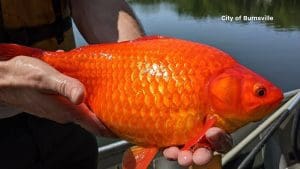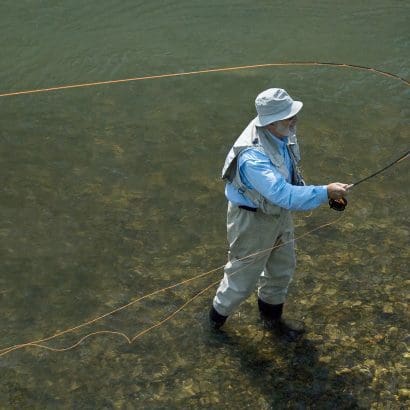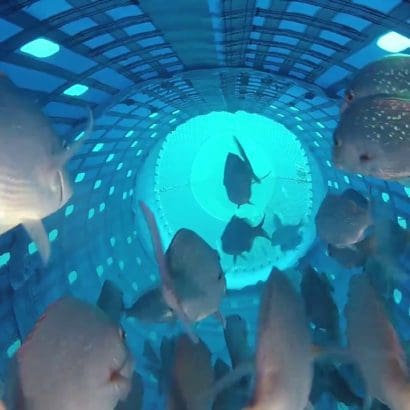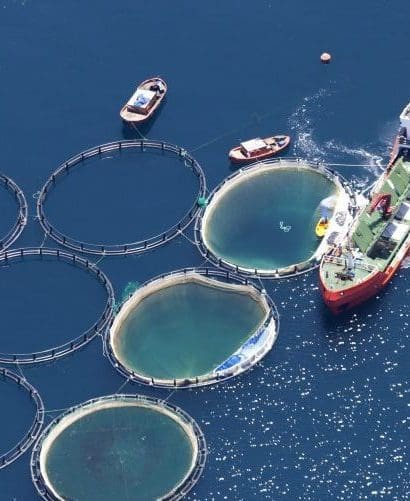
Fishing is a fun and important activity, but sometimes it can harm our environment, especially when we’re not careful. One big problem is plastic pollution. Imagine if you go fishing in a beautiful lake or river, and instead of catching fish, you find plastic bags and bottles. That’s not good, right? In this article, we’ll talk about how we can fish in a way that keeps our environment clean and safe for all the creatures that live in the water. Let’s learn about “Sustainable Fishing” and how it helps us avoid plastic pollution!
Contents
Impact of Fishing on the Environment.🐟
Hey there, young eco-adventurers! Today, we’re diving into a world of wonder and concern—the impact of fishing on our beautiful planet.
Why is Sustainable Fishing Important?
First, let’s answer a big question: Is sustainable fishing important? Absolutely! Imagine you have a magical fish tank that provides yummy fish for you to eat. But, if you keep taking out fish faster than they can grow, soon your tank will be empty, and you’ll go hungry. That’s why sustainable fishing is super important! 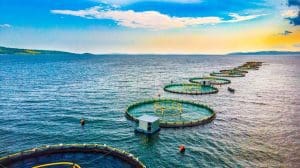
Is Sustainable Fishing Possible?
You might be wondering, is sustainable fishing possible? Well, yes, it is! Sustainable fishing is like a superhero, helping our oceans, rivers, and lakes stay clean and full of life. We’ll explore how it’s done!
The Not-So-Good Side of Fishing
Now, let’s talk about something not-so-fun—how fishing can sometimes be bad for our environment.
Exploring the Dark Side of Fishing
Fishing can be awesome, but when people don’t fish carefully, it can cause problems. Think about when you go to a buffet and take all the food, leaving nothing for others. That’s like what happens when some fishermen take too many fish from the water.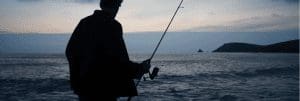
Examples of Unsustainable Fishing Practices
Now, let’s look at some examples of unsustainable fishing practices. Imagine you have a garden with beautiful flowers. If you pull out all the flowers too fast, your garden will be empty and sad. That’s similar to what happens with some fishing methods.
For instance, “overfishing” is when people catch fish faster than they can reproduce. It’s like taking all the cookies from the cookie jar without leaving any for later. Not a good idea!
Plastic Pollution in the Oceans🐟
Ahoy, young environmentalists! Today, we’re going on a deep-sea adventure to uncover the mystery of plastic pollution in our magnificent oceans.
The Plastic Problem
Picture this: you’re exploring the underwater world, surrounded by colorful fish and playful dolphins. But wait, what’s that? It’s not a beautiful sea creature; it’s a plastic bag!
Understanding Plastic Pollution
Let’s dive right into understanding the problem of plastic pollution. You know those plastic bottles, bags, and toys we use every day? Well, sometimes they end up in the ocean by accident, and that’s where the trouble begins.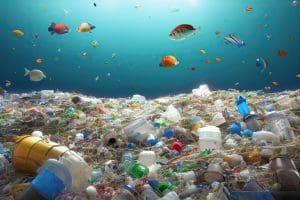
Plastic doesn’t disappear like magic. Instead, it breaks into tiny pieces called “microplastics.” Imagine your favorite puzzle getting smaller and smaller until the pieces are too tiny to put together. That’s what happens to plastic in the ocean.
Shocking Statistics
Now, prepare to be amazed (and a little worried) by some surprising statistics. Did you know that there are more than 5 trillion pieces of plastic in our oceans? That’s like having a mountain of Legos taller than Mount Everest!
And guess what? Marine animals, like turtles and birds, sometimes mistake these plastic pieces for food. It’s as if they think plastic is a tasty treat! But it’s not yummy at all; it’s very bad for them.
The Consequences
Now, let’s talk about the consequences of all this plastic in the ocean. When fish eat microplastics, and we catch those fish to eat, we might end up eating tiny bits of plastic too! Yuck! It’s like finding pieces of plastic in your favorite meal.
But there’s more. Plastic can hurt sea creatures and their homes. Imagine someone dumping trash in your bedroom; it would make you very sad. Well, it’s like that for underwater animals when plastic takes over their homes.
Sustainable Fishing and Environmental Respect.🐟
Welcome back, eco-warriors! In this chapter of our oceanic journey, we’re delving into the world of sustainable fishing and how it’s a big part of respecting our environment.
What is Sustainable Fishing?
First things first, let’s talk about sustainable fishing. Imagine you have a magical fishing rod. If you only catch fish when there are plenty of them, and you leave some behind to make more fish babies, that’s sustainable fishing! It’s like taking just enough cookies from the cookie jar without emptying it.
Sustainable Fishing Methods
Now, let’s explore some cool sustainable fishing methods. One way to be an eco-friendly angler is by using nets with special holes that let baby fish escape. It’s like making sure the little ones have a chance to grow up and have fishy families of their own.
Another way is to fish with a buddy. When you fish with a friend, you can catch more fish together and use less gas for your boat. That’s like carpooling to school to save energy!
Is Tuna Fishing Sustainable?
You might be wondering, is tuna fishing sustainable? Tuna is a popular fish, but some types are getting a bit too popular, and that’s not good. To make sure we have tuna for many years, some fishermen use special hooks that only catch the big tuna and let the small ones swim away. It’s like inviting the grown-ups to a party and letting the kids stay home.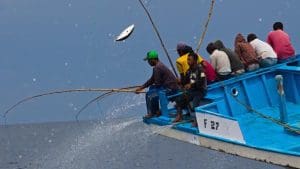
Tips for Sustainable Fishing
Now, let’s get to the fun part—tips for practicing sustainable fishing. Here are some super easy ways to be an eco-friendly angler:
- Know Your Limits: Find out how many fish you’re allowed to catch and stick to that number. It’s like having a slice of cake and not the whole cake.
- Use Eco-friendly Bait: Some baits are better for the environment than others. Ask your local fishing store for eco-friendly options.
- Release Unwanted Fish: If you catch fish you don’t want, gently release them back into the water. It’s like giving them a second chance to swim freely.

Reducing Plastic in Fishing
Now, let’s talk about how to reduce the generation of plastic when we go fishing. Instead of using plastic bags for your catch, bring a reusable cooler or container. It’s like bringing a lunchbox to school instead of a disposable bag.
And guess what? You can even use biodegradable fishing line that breaks down over time, so it won’t become ocean pollution. It’s like having a magic string that disappears after a while!
Successful Initiatives in Sustainable Fishing.🐟
Hey there, eco-champions! In this part of our adventure, we’re going to explore some exciting successful initiatives that prove sustainable fishing is not just a dream but a reality!
What Does Sustainable Fishing Mean?
Before we dive into these inspiring stories, let’s quickly recap what sustainable fishing means. Imagine you’re playing a game, and the rules say you can only catch a certain number of fish. If you follow those rules, you’re playing sustainably! It’s like being a fair player in a game so that everyone can enjoy it.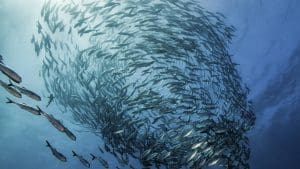
Seafood with a Side of Sustainability
Now, let’s talk about seafood. You know that delicious fish and shrimp you love to eat? Well, some fishermen and fisherwomen are working hard to make sure you can keep enjoying it for years to come.
Inspiring Stories of Sustainable Fishing
Here are some inspiring stories of projects and fishermen who have become eco-heroes by adopting sustainable fishing practices:
- The Coral Protectors: Imagine a group of fishermen and divers working together to protect coral reefs from damage. These underwater superheroes make sure their nets don’t scrape against the fragile corals, allowing them to thrive. It’s like being a guardian of a magical underwater garden!
- The Turtle Team: Some fishermen have started releasing sea turtles that accidentally get caught in their nets. These turtles are like the superheroes of the sea, and now they have their own team of helpers!
- The Fish Farm Innovators: Instead of catching fish in the wild, some people are raising fish in special farms. This way, they don’t harm the ocean’s delicate balance. It’s like having your own garden for fish!
Positive Results for the Environment
Now, let’s talk about the positive results of these sustainable fishing initiatives. When people fish in a way that doesn’t harm the ocean, it’s like giving nature a high-five! Here are some of the good things that happen:
- More Fishy Friends: When fishermen release young fish and other sea creatures, it helps them grow and have families. It’s like inviting more friends to your birthday party!
- Healthy Oceans: Protecting coral reefs and being careful with fishing gear means our oceans stay clean and full of life. It’s like keeping your room tidy so you can find all your toys easily!
- Tasty Seafood: By fishing sustainably, we can keep enjoying delicious seafood without worrying about running out. It’s like having your favorite snacks always available.
The Role of Consumers in Sustainable Fishing.🐟
Hello, young environmental champions! In this part of our journey, we’ll explore how each one of us can play a crucial role in making sure our fishy friends and oceans stay healthy through sustainable fishing. Yes, that means you too!
Sustainable Fishing Examples: Let’s Get Inspired
Before we dive into our role as consumers, let’s take a quick peek at some sustainable fishing examples that prove it’s possible to enjoy delicious seafood while being kind to the environment:
- Smart Nets: Imagine fishermen using special nets with escape routes for small fish, so they can grow up and have fishy families. It’s like giving baby fish a ticket to freedom!
- MSC-Certified Seafood: Some seafood products come with a special label called MSC (Marine Stewardship Council), which means they were caught using sustainable practices. It’s like a gold star for fish!
Now, let’s explore how consumers (that’s you and me!) can be superheroes for the ocean:
How Consumers Can Contribute to Sustainable Fishing
- Choose MSC-Certified Seafood: When you’re at the grocery store or a restaurant, look for the MSC label on seafood products. It’s like your secret decoder ring for eco-friendly fish!
- Ask Questions: Don’t be shy to ask where your fish comes from and how it was caught. It’s like being a detective for the environment!
- Reduce Waste: Avoid buying too much fish that might go to waste. It’s like taking only the snacks you can eat so you don’t throw food away.
- Support Sustainable Practices: Show your support for sustainable fishing by telling your friends and family about it. It’s like spreading the word about a fantastic new video game!
Alternatives to Consuming Fish
But what if you want to help the environment even more? Here are some alternatives to consuming fish that are kinder to our planet: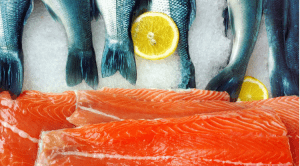
- Try Plant-Based Seafood: Some companies make delicious plant-based seafood options that taste just like the real thing! It’s like having a fishy feast without actually catching fish.
- Explore Other Proteins: There are plenty of other yummy proteins like beans, tofu, and nuts that can be a tasty part of your meals. It’s like having a treasure chest of food choices!

